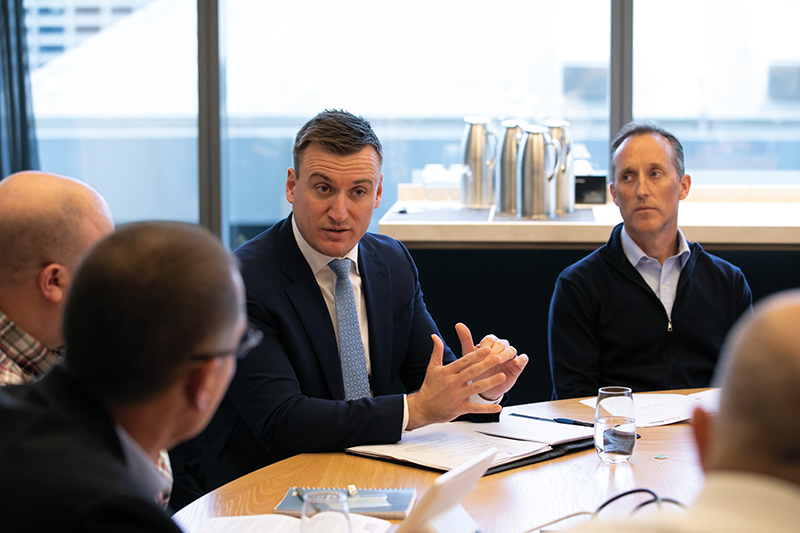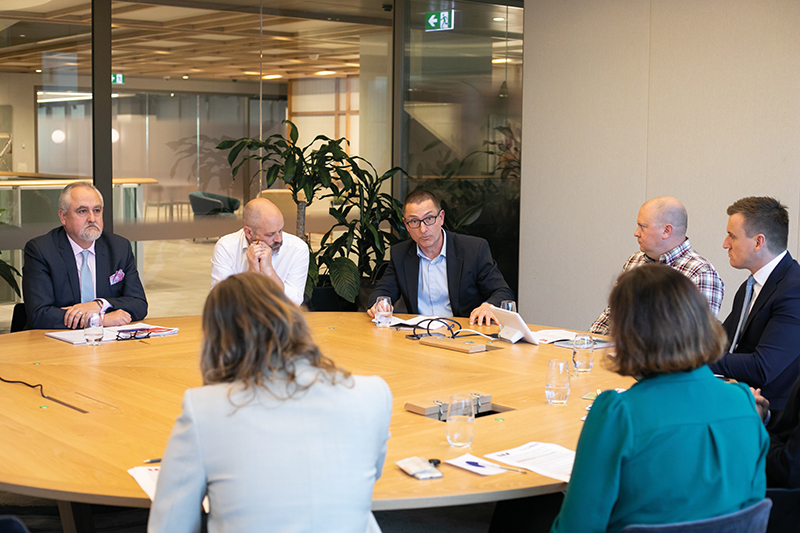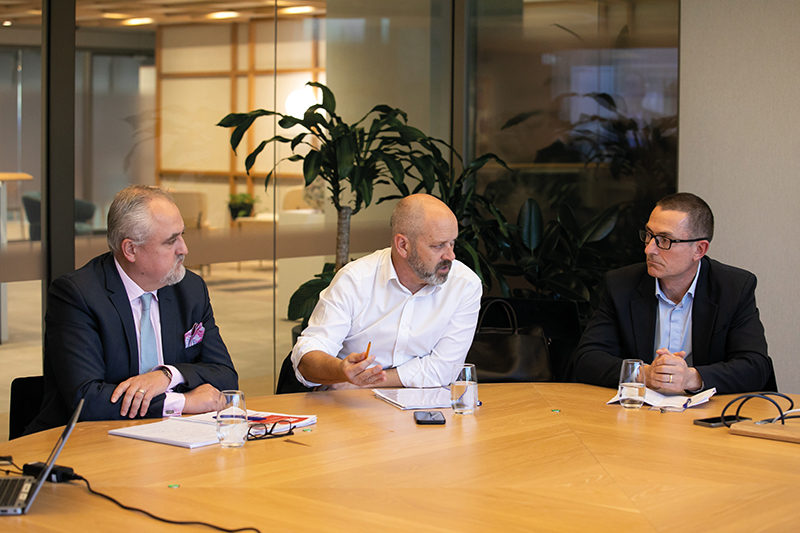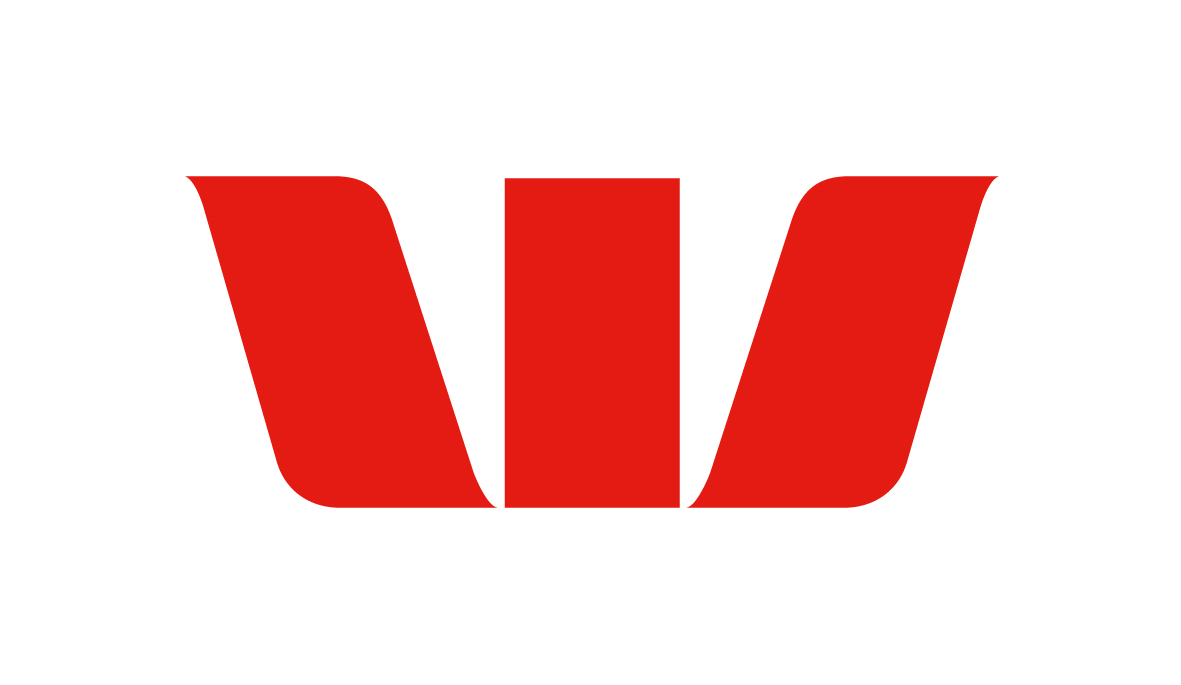
Conditions coalesce for Australian government-sector issuers
The annual roundtable for Australia’s leading government-sector borrowers, hosted by KangaNews and Westpac Institutional Bank in July, found the issuers in buoyant mood. They have been able to shake off market volatility and economic uncertainty to deliver positive funding outcomes – while the semi-government sector in particular may have hit a new level of liquidity and global relevance.

CONDUCIVE CONDITIONS
Davison The market has been waiting for clarity on the terminal rate position for some time and we are probably still not quite there. At the same time, there have been ample opportunities for Australian government-sector issuers to fund: for instance, semi-government syndicated volume of more than A$35 billion (US$23.5 billion) in the first half was more than either of the last two years. How have issuers found market conditions over the course of 2023?
CHANDLER We issued benchmark syndications in February, April and June. Probably the biggest change we have observed this calendar year is a more diverse set of investors participating. Recently released data confirm the uptick in foreign investor participation in semi-government bonds during Q1 of this year and, whether it has been through syndications or reverse inquiry, a very strong theme has come through.
We were distributing, in some instances, less than 10 per cent of our fixed-rate syndications offshore in 2022. This year, we seem to be back up to where we observe our long-run average to be: around about 20 per cent of our books tends to go offshore over the full cycle.
There wasn’t any discernible difference between the two fixed-rate syndications we did this year. One was a tap, the other was a new line. Ordinarily, we would probably expect to see a little more demand in the new line than in the tap, but this didn’t really play out. The two transactions were the same size with very similar spread to government bonds. But, again, the biggest change for us has been a greater number of investors participating. This has given us a lot of opportunities to issue across the curve and in all different formats.
The June deal was a floating-rate note (FRN). I don’t think there’s anything overly surprising about it as it was an almost identical trade to ones we have issued in the last couple of years. The only thing that was a little different this time is that we pushed out the benchmark FRN market beyond the 10-year point, which is the first time this has happened.
KELLY We have observed similar external factors, which have helped us to issue around A$17 billion over the past six months. We have been active across all formats including syndication, tenders and of course reverse enquiry. We use reverse enquiry quite aggressively to respond to direct investor demand, and in fact we have done roughly 65 per cent of issuance through reverse enquiry this year.
Domestic balance sheets and real money have been participating consistently, but the tick up from offshore central banks has been one of the big changes we have noticed in the last 12 months. Markets feel positive at the moment – long may it continue.
KNEEN We did three syndicated transactions in the financial year that raised A$7 billion – which amounts to a somewhat greater lean on the syndicated market over the last financial year.
One of those deals was an FRN, which we did in the first half of our financial year. This was reflective of where we saw demand at that time, which was generally from bank balance sheets accumulating HQLAs [high-quality liquid assets].
Coming into the second half of the financial year, we had confidence that the market was starting to feature a more diverse investor base. This is when we took the opportunity to launch our 2035 benchmark issue. We had a very good, diverse bookbuild through that process. We issued A$1.5 billion but volume was more of a function of our funding requirement than the quality of the book.
With the confidence gained from this deal, we also issued a green bond in early March. This was another very good deal with a large bookbuild and final volume of A$3 billion.
Davison From an outside perspective, it appears that there is plenty of demand – enough that issuers can enter syndications with confidence that they will secure good outcomes. How would issuers characterise execution confidence?
CHANDLER The observation here is that we did a couple of fixed-rate taps intraday last year because of the risk of overnight volatility. We haven’t done so this year because we have had good confidence in the market. Running books overnight has paid off – the risk-return equation was worth it.
KELLY No matter how many syndications we have done, we always go into these deals with a bit of trepidation – because we are talking about issuing an undisclosed volume within a price range that we may or may not be able to influence further after launch. In reality, it is about making smart decisions about which is the right bond to syndicate in particular market conditions.
If conditions are favourable, we can have a higher degree of confidence about price and volume. If not, we have to be a little more realistic about pricing – giving investors the ability to participate and have a greater say on the appropriate clearance level.
Actually, we have found execution has been pretty smooth across all formats. In our minds, whether it is pricing a syndicated trade, deciding on what bonds to tender or where to show an offer in response to an investor reverse enquiry, it is about setting the right price in to clear the volume we want to raise in the current market with little or no impact on spreads.
KNEEN Looking at our two syndicated trades this year, participation was very good. We got around 20-30 per cent offshore participation in these deals. In other words, while we may have been quieter over the last few months this was more a function of having raised nearly A$11 billion of our A$14 billion programme up to March. We managed to fill the rest of this with reverse enquiries so there was not a requirement to do further syndication.
Saying this, for our new programme – that we are now in – we have indicated that we will be exploring a new 2036 benchmark bond that, ideally, we will be seeking to syndicate.
Davison Western Australian Treasury Corporation (WATC) was in the market relatively recently with its debut green bond. The deal was very well received, but how much of the positive experience was due to demand for the labelled product versus general market conditions?
ZUVICH This is a good question, because we concluded after the trade that we couldn’t clearly identify whether the exceptional book size and the number of bids received was purely down to the deal being a green labelled issue.
Having said this, we believe we prepared the groundwork in advance of the green-bond issuance process well. We had done a lot of work in the last 18 months to two years starting with the release of the ESG [environmental, social and governance] information pack in November 2021, an update in May 2022, followed by the framework development, the second party opinion and an intensive domestic and offshore roadshow speaking to investors prior to coming to market. We were clear in our communication that the deal would be done in the last quarter of the 2022/23 financial year.
The feedback we received from the roadshow was very positive about what we were trying to achieve. We were confident that we would be able to fund what was needed. From the start of the execution process, we were quite surprised by the momentum of the book – it built very quickly.
We had 14 ESG, or green, specific funds in the transaction – this was a sector we were aiming to appeal to as we wanted to diversify the investor base domestically as well as offshore. From these metrics, we achieved what we were aiming for.
There were a couple of other contributing factors. We have been out of the syndicated fixed-rate market for two years – with our small funding programme we haven’t needed to access the market in sizeable volume for that time. We also returned with a 10-year deal, which tends to be a sweet spot for the market. This appealed to numerous investors – not just those interested specifically in ESG labelled issuance but to the general investor community, domestic and offshore.
We are extremely happy with the process even though we anticipated the deal would go well. We were fairly confident we would be able to print what we needed and we had to announce the final volume fairly early on just to manage investor expectations about potential allocations.
It was the same with the FRN we did in January. The FRN was a five-year, which is the sweet spot for us and for investors in this format. It was a slightly different issuing approach in the sense that it was done intraday. Because of the wider investor base and offshore roadshow, we needed to keep the green bond open overnight so all investors could see the pricing range, and make decisions about relative value and whether they wanted to participate.
Overall, we are extremely pleased with the outcome of the transactions. These were the two main funding projects we had on the agenda in 2022/23 and they accounted for 65-70 per cent of our total programme.
Davison Is it a similar story from South Australian Government Financing Authority (SAFA), in the sense that there is a relatively small funding requirement and thus limited syndication activity?
KENNEDY We came out of the blocks early last financial year: we had raised about A$5 billion of face value in bonds by Christmas. Then we saw a significant revision down in our funding requirement based on the mid-year budget update: our funding task was revised down to A$4.8 billion from A$6.6 billion. We were therefore practically in a pre-funded position by the end of 2022.
That financing number slipped back a little when the 2023/24 budget identified a final estimate of A$5.4 billion of cash required. In the meantime, we continued issuing – doing a new 2038 syndicated deal in February. Similarly to other issuers’ experiences, roughly 30 per cent of that deal was placed offshore. We finished the financial year having issued roughly A$6.5 billion face value, which generated about A$5.9 billion in cash. As a result, we are about A$500 million pre-funded into 2023/24 even with the slippage to the end of the financial year.
The syndicated transactions we did during the last financial year represented about 85 per cent of our total volume. We only did one tender last year, and a small amount of tapping into our non-benchmark lines via reverse enquiry. But our need to access markets slowed over the second half of the financial year, outside our 2038 benchmark.
Davison The point about ending up in a pre-funded position is relevant as funding requirements seem to bounce around quite a lot at the moment – recently, often reducing issuance needs. How do borrowers think about smoothing and otherwise managing fluctuating requirements?
WHEADON Consistent with this theme, the federal treasurer has indicated a bigger surplus in 2022/23 than forecast in the budget. We finished the last fiscal year with around A$20 billion more cash than we were expecting, which will have implications for our funding going forward. In May, we announced a Treasury bond programme of around A$75 billion for 2023/24 but, all other things being equal, it is going to be lower than that.
Our footprint in the market is very light at the moment. For instance, our tender run rate has come right back to A$700-800 million a week while our net supply over the last 12 months or so has been slightly negative. The real supply story, at least in the near term, is going to be in the semi-government sector.
In announcing our funding programme, we made a call about smoothing: issuing a bit more than needed in 2023/24 to avoid what would have been a large step up in issuance in 2024/25. Our judgement was that this made sense in the interests of smooth and orderly execution.


Davison On market conditions in general, given the fairly light issuance requirement can we assume it has been plain sailing for the Australian Office of Financial Management (AOFM)?
WHEADON I think that’s fair – even though it has been a pretty volatile year. A lot of things have happened, including the banking sector tremors in March, angst about the US debt ceiling, geopolitics, and the constant speculation and changing views about central bank terminal rates. The Australian bond market has been robust and well bid throughout. There has been no point in 2023 where we haven’t felt confident about our capacity to fund.
We did a very successful syndicated transaction back in May, where we issued A$14 billion into a new 12-year bond. Given the quality and size of the orderbook, we could have printed a lot more than this. Book volume at clearing was A$60 billion, which I think says a lot.
Ultimately, the robustness of our market is a reflection of the sheer number of investors that participate and the diversity of the investor base. Australia is of course a strong credit, and we are also fortunate to have many liquidity providers making markets. These elements together are what makes the Australian bond market such a great asset class to be in.
Domestic and international demand outperformance
Australian sovereign and semi-government funders report robust demand for their issuance from key domestic and international investor sectors – including at least one about which there was considerable concern until recently.
WHEADON Japanese investors have been net accumulators of Australian bonds for decades. There have of course been periods in which yen weakness or less attractive hedged or unhedged yields have triggered times of net selling from Japanese investors. But the trend has been up for a long time.
Japanese Ministry of Finance (MoF) data indicate that Japanese investors were net buyers of government and semi-government bonds through March and April after a year or more of net outflows. Our own secondary market turnover data tell a similar story, although cumulative ACGB [Australian Commonwealth government bond] flows were broadly flat looking back over the 12 months to March 2023. This suggests that selling has been more focused on semi-government bonds.
Should we see BoJ [Bank of Japan] policy normalisation, there will likely be a period of volatility and possibly some Australian dollar divestment. We should remember, though, that there are many Japanese investors with good reasons for being in Australian bonds, including some with Australian dollar denominated liabilities to manage. I suspect there would be a period of volatility but we would move past it.
EASE OF EXECUTION
Davison Have issuers been at all surprised at how conducive markets have been given all the risk factors? For instance, it only took a few days for the market to digest the failure of Credit Suisse and get back to business. We keep brushing off these risk events - has anything changed to make this possible?
MCCOLOUGH I was in Europe and then North America during the weeks between the Silicon Valley Bank and Credit Suisse failures, including being in Frankfurt on the Monday after the Credit Suisse event at the weekend. I assumed I may as well throw out my presentation, either because meetings would be cancelled or this horror story would be the prevailing narrative over the next couple of weeks. But it calmed down straight away.
From a purely Australian perspective, the understanding of our market from consistently engaging with global investors over a number of years put Australia at the forefront of investors’ minds when looking for jurisdictions where they would not have to factor in as much of an uncertainty premium. It is a flight to quality. This was also a function of the way we have reduced complexity in our banking sector and are very well regulated.
KELLY One of the big changes is the velocity of turnover in the semi-government sector, which I think is a real positive for the market. We were all a little nervous about what was going to happen earlier this year when there was a lot of talk about Japanese selling – and some decent volume of Japanese divestment did happen. But it got absorbed very, very efficiently.
We also know a lot of big switching trades have been happening, from domestic and offshore accounts. These are also getting absorbed. The dealer panel has been functioning very well as a group of intermediaries and has been willing to take on some of the risk to facilitate these types of trades.
As a result, there has been A$200 billion of turnover in TCV [Treasury Corporation of Victoria] bonds in the first 11 months of the year. This is absolutely extraordinary and it gives investors confidence that they can enter and exit TCV – and semi-government – positions with little difficulty.
CHANDLER Our turnover is not quite up at A$200 billon but we are north of A$150 billion for the year. Over the last 12-18 months, the size of the semi market has been such that we are getting some very big and meaningful accounts starting to participate. Whether this be reserve managers, relative-value investors, real-money accounts or others, it certainly feels that there are many more eyes on our market now.
The flow on from this is the ability to get in and out of positions, and to trade at de minimis spreads from mid. This is one of the key reasons why I think issuance has been, to use your words, plain sailing.
KNEEN Similarly, we have seen an uptick in turnover recently. In the last 12 months there was around A$130 billion worth of turnover in our bonds. With much larger borrowing programmes, the semi sector continues to grow – and we are seeing that investors are more active as they have the ability to move around a lot more easily than they could in the past. Market size is extremely important and it is benefiting all the issuers in the sector.
ZUVICH We are an outlier as far as issuance goes and this has been reflected in our turnover, which probably hasn’t increased to the same level as our peers. This is just a function of what we need to issue and when we need to do it. As I mentioned, we completed 70 per cent of our programme in two syndicated trades.
The reality is an investor that wants get out of our name can – but to get back into our name will generally be dependent on sourcing the stock from the market. This inevitably has an impact on turnover.
KENNEDY It is similar for SAFA. The investors we talk to and that participate in our programme tend to be more buy-and-hold accounts, rather than treating our bonds as a liquidity instrument, whereas they could get great liquidity in other states or the Commonwealth. Typically, these investors treat WATC and SAFA as diversification in their portfolios rather than trading instruments.
For example, the transaction we did back in February had 54 investors in the book including six new names to SAFA, and the conversations we had with the new investors, post-transaction, revealed that they are all buy-and-hold. None of them intended on selling their holdings and they were not there for trading purposes.
Different investors have very different appetites across issuers. It’s not that a A$4-5 billion outstanding bond line will necessarily be illiquid. It’s just that investors look through a different lens to the one they use for A$10-20 billion lines.
BLUNT On the topic of smooth sailing and the strength of the market in the last 12 months, it is worth adding that the risk in 2022, especially when we were executing larger fixed-rate lines, included lack of swap liquidity. We saw the peak in swap spreads in late 2022 and they were still challenging into early 2023. To be able to execute fixed-rate lines comfortably when the swap market was sometimes very difficult is a big credit to the market.
Looking at the situation now, swap liquidity is back for domestic investors – at least, there has certainly been substantial improvement. The ability to print at size, including in fixed-rate lines, is present.
Davison How much comfort is there that this will remain the case?
BLUNT I am as confident as I can be. It is still directional and is affected by flows. But, at this stage of the cycle, there is definitely a receive-side flow that should continue – notwithstanding what happens with the Reserve Bank of Australia and where the cycle ends. Things have been very different from January onward.
MCCOLOUGH Investors in the swap market that weren’t playing for various reasons are certainly back – and they mostly receive, resulting in more balanced supply and demand.
“The mining sector was inevitably a focus for some ESG investors. With the framework we have in place, we are working with the private sector to assist its carbon emissions reduction.”
SEMI-GOVERNMENT SCALE
Davison Is the increased turnover we have discussed a step-change for the semi-government sector and will it deliver a net downward pressure on yield?
MCCOLOUGH I concur with everything that has been said. We certainly haven’t reached a tipping point in which more supply is a negative. Supply influences price, but it is also adding to liquidity.
Before 2019, annual new issuance averaged A$30 billion or so across the semi-government sector. It is now more like A$100 billion. This is a pretty substantial jump and it has certainly brought in new investors.
I would be lying if I was to tell you that investors aren’t asking about supply. The real question should be whether scale of issuance is fully in the price. There are various ways to look at this. One is relative to the AOFM programme – which is certainly going in a different direction from the states at the moment, and at least for the next little while.
However, because these issuance dynamics have been on the table for so long, if there were ongoing penalties to be paid in the price I suspect we would have already seen it. Therefore, I think it is the liquidity piece – and the dragging in of extra demand – that is the dominant theme. To answer the question, yes, greater issuance is a positive for outright yield from this perspective.
Davison Over the last decade and a half, the policy response to risk events has always been to put more liquidity into the system. It has been quite the opposite this year: central bank tightening has continued despite volatility events. Relating this to the conversation we are having, does it suggest that the new liquidity coming through for semi-government issuers is an asset allocation story?
MCCOLOUGH The short answer is yes, absolutely – and it lines up with what we have all been saying. Various investors that in the past we have all spoken to but haven’t pulled the trigger have now done so or are about to.
CHANDLER The other thing for all of us is that we have a panel of banks that advocate on our behalf, which is also extremely important in promoting the sector and ‘team Australia’.
But I think we would say the years of investor relations work, including doing that work in jurisdictions that may not be active at the point in time when we are there, is all helpful in producing a situation like we have now.
What we are experiencing is quite rare in the sense that it is not often that we see most, if not all, investor types and jurisdictions actively buying. I would argue that is what we have seen, to some extent, so far this year.
KELLY I would add that the semi-government market, for the first time, is an asset class in and of itself. For my first 20-odd years of doing semi-government issuance, the sector sat somewhere back of ACGBs [Australian Commonwealth government bonds]. There is now A$430 billion of semi-government bonds outstanding, more than half the size of nominal ACGBs, and supply from the sector this year will be much greater than that of ACGBs. This is enough to make us an asset class of our own.
The liquidity issuers and dealers provide, and the marketing that has been done, demonstrates that we have all invested a lot of time in helping investors gain a high degree of confidence in the sector. My view is that we have reached a point where the semi market is too big to ignore by anyone running Australian dollar high-grade risk.
BLUNT Liquidity is definitely the narrative, especially with offshore investor participation. In asset allocation, the ACGB to semi-government move is real, as is the conversation around it. This is largely due to liquidity, but there are other factors.
Davison Presumably there must also be new money coming into Australian dollars overall, in the sense that there is a trend of allocations moving to semi-governments from ACGBs. However, the AOFM has not have any issuance problems, either – albeit with an eased net new issuance task.
BLUNT It is relevant that funding tasks are diverging slightly between the states and the Commonwealth at the moment. The liquidity story in semis includes a certain amount of reallocation. But there is certainly new money there, too. I think we are just scratching the surface when it comes to semi-governments as a product: there is a lot of new money to come.
Flexing supply in the sovereign linker market
Inflation-linked bonds are a small but consistent component of the Australian Office of Financial Management (AOFM)’s funding programme. Demand has picked up at the margin and the sovereign debt management office has amended its issuance approach.
WHEADON The linker market has remained functional over the past year with reasonable liquidity but sometimes inconsistent demand.
We conducted a roundtable recently, where we brought the buy and sell sides together with a view to exploring ideas that might help improve functionality. The key takeaway message for us was that a more flexible approach to issuance was warranted. We responded to this in our last market update by announcing a wider target issuance range, of A$2-4 billion (US$1.3-2.6 billion) instead of the more usual A$2-2.5 billion we have used in recent years. The signal here is that, if there is demand, the AOFM is prepared to respond to it.
Also on the flexibility theme, we recently ran a dual-line tender for the first time in more than a decade. If our liaison with investors and intermediaries uncovers good interest in different segments of the curve leading into tenders, as was the case here, we will respond accordingly.
SUSTAINABLE FUNDING
Davison How have these demand trends played out in the sustainable finance space over the past year?
PLAISANT MILLECAMPS We have recently noticed a trend toward diversification of investors buying labelled issues. Central banks in some European countries specifically are buying ESG-labelled bonds, to highlight their own green credentials and support the market. The European Central Bank is buying corporate green bonds and some countries have been really attracted to labelled issuance.
We have also seen some balance sheets – especially domestic balance sheets – actively seeking semi-government green and sustainability bonds, especially in the secondary market. This is a sign of internal policies developing.
Davison Is it fair to say that, as supply grows, demand will likely continue to increase by a greater factor?
PLAISANT MILLECAMPS You could say this, yes. As more issuers come to market using labelled format, investors are getting more skilled at understanding the structures and market standards, which leads to issuers becoming more comfortable coming to market in green, social or sustainability format. Hopefully this is a virtuous circle.
Davison Global high-grade issuers often note that, as development banks, everything they do is sustainable by definition. Does the same apply to Australian semi-governments? Do global investors apply more scrutiny when it is an Australian borrower issuing a labelled bond?
PLAISANT MILLECAMPS Coherence of the issuer is really important. That is, making sure the green-bond framework and the green programme is really going to deliver what the state needs to achieve to meet environmental and social targets. This is something global investors are looking at in more detail, along with aspects of structuring.
ZUVICH One of the critical things investors appreciated when WATC issued its green bond was that it followed a two-year build up of state ESG disclosures and development of the Sustainability Bond Framework with a comprehensive second-party opinion (SPO) that essentially verified that almost all of WATC’s programme could qualify for labelled issuance.
All the detail about what we could fund and how it meets UN or ICMA [International Capital Market Association] principles was addressed in the SPO, and investors could see all of it prior to our roadshow. Our presentation focused on what the WA [Western Australia] government is trying to achieve, how can it meet its targets and whether it has the ability to do what it claims it can do.
Investors were interested to learn that WA, uniquely in Australia, owns all its utilities such as water, electricity and public transport. The state has the ability to directly affect its own reduction in carbon emissions, such as phasing out coal-fired power generation by 2030, continuing the move to renewables and electrification of its public transport network – which is happening.
This took investors by surprise, because a lot of countries aren’t in control of their own utilities and therefore have to rely on some other method of reducing their carbon footprint or working through a sustainable framework. The 2030 emissions reduction timeframe announced by the WA government was initially seen as ambitious by some investors. But after outlining how the state intended to go about it, within the government sector and its work with industry – particularly the mining sector – the word ‘ambitious’ started to change to ‘achievable’.
Some investors were surprised by the social co-benefits of some of WA’s green projects, including contracts or employment of different groups and allocation of contracts to women-only businesses and First Nations companies. These were positively received, even though they weren’t clearly enunciated in the programme we are funding.
They were also impressed by the short timeframe. This is very much a forward-looking transformational issue; it is not there to refinance things that have been done previously. This is a dynamic of the framework investors were happy to hear about.
Davison How much influence can a state government have in the private sector?
ZUVICH The mining sector was inevitably a focus for some ESG investors. With the framework we have in place, we are working with the private sector to assist its carbon emissions reduction. The resources industry is also motivated by its stakeholders to transition to low-carbon business models, which also resonated with investors. Investors could see that what we laid out was eminently achievable and that the entire state – private and public – is working toward net zero emissions.
CHANDLER The legislation last year of a net zero target in Australia has really aided the sector. When we were in front of investors at the end of calendar 2022, we weren’t being asked questions to the extent we had thought we would. Our view is that the legislative target for net zero at federal level last year might have taken some of the focus off Australia as a jurisdiction and, perhaps, some of the opinions have been redirected. There is certainly evidence of progress happening on this front.
In the past, perhaps we had a reputation of being a mining, high-emitting jurisdiction and that we weren’t doing a lot about it. This had a very important impact on ESG in this market.
An extension from this is the work happening now on a domestic taxonomy. Investors here and offshore can see meaningful steps being taken. This is a really important factor, alongside how all our programmes adhere to standards and that we have third parties that verify as much.
Davison Do others agree that Australia has closed its credibility gap?
PLAISANT MILLECAMPS I think the gap is closing. There is now more coherence between the states – projects and policies they have been doing for years – and endorsement at federal level. Legislation has changed the way Australia presents itself to the global investor community.
KELLY When I was in Asia and Europe recently, there was a strong sense that investors want to understand the macroeconomic drivers that underpin ESG labelled issuance. For TCV, this meant we spent a lot of time talking to investors about Victoria’s climate strategy and its pathway to net zero along with our recently released TCFD [Task Force on Climate-Related Financial Disclosures]-aligned climate-related risk disclosure statement.
Investors know governments are extremely aligned with social use of proceeds, but they want to know what is being done to own and drive environmental change. To me, this is the big story. Issuing a labelled bond is not about looking good, it is about supporting how the government is tackling climate action. This is where our investor engagement has been focused.
Davison We have talked for some time about SAFA’s whole-of-issuer approach to the ESG piece. Is the work paying off?
KENNEDY While SAFA’s approach has been on a whole of programme basis, it should really be viewed more as a whole-of-state approach. SAFA has long held a view that it wanted to be seen as sustainable as a state and therefore as an issuer, rather than to have isolated pieces of our debt viewed as green, social or sustainable.
The activities and assets of the whole state meet ESG criteria, align to the UN SDGs [Sustainable Development Goals], and are considered eligible under frameworks such as ICMA or CBI [Climate Bonds Initiative]. South Australia (SA) is a global leader in the renewable energy sector, as an example, and has already done a significant portion of its green economy transition.
The work involved has been complex, especially as SAFA is just one department within the SA government and not a policy agency that can direct whole-of-state activity. We are working with agencies to identify and categorise their activities and assets, and helping in the delivery of reporting requirements. SA is committed to producing a sustainability report during 2024.
This is allowing us to build a framework sitting over the whole of the state’s activities. We will have these credentials – be it expenditure, assets, programmes or targets – validated to provide a robust and transparent oversight of SA.
We are very excited about the progress we are conducting and about setting SA up for what we think will meet investor requirements now and into the future. We are hoping to make some significant announcements regarding our progress shortly.
Davison Queensland Treasury Corporation (QTC) has been a green issuer for many years. Is there scrutiny or pressure from investors to continually review what it is doing in this sector, to keep up with what is an evolving market – which possibly means changing views on what represents best practice?
KNEEN Our green-bond programme was initiated in 2017 to draw attention to the state’s credentials in the space, and I believe it has successfully done that. Since then, we have issued more than A$10 billion in green bonds.
Over time, our reporting has become a lot more detailed and the Queensland government has released its second annual publication of the Queensland Sustainability Report.
As for what is in QTC’s green-bond pool and how it will evolve over time, we have further capacity in the pool to draw upon for future issuance. At the same time, we are continually seeking to add more assets. Looking forward, state capex is set to increase significantly and part of this is the cost of financing Queensland’s Energy and Jobs Plan. We look forward to working with the government to incorporate this into our programme, especially in growing our green-bond pool.
Davison Is there any update on logistical plans and timelines for the AOFM’s green bond?
WHEADON Shortly after we have announced the banks that will advise on the green-bond framework, we will begin consulting with investors. Our indicative timeframe is to have the green-bond framework released before the end of the 2023 calendar year, with a view to issuing our first green bond by the middle of 2024.
Davison It has been suggested that labelled bonds might be more likely to be bought and held than vanilla securities from the same issuers. In this context, it would be interesting to hear views on relative performance and liquidity of labelled product.
BLUNT Green-bond demand has outstripped supply in the semi-government market. There is always an element of relative value attached but we are still in phase one of an evolution. Even so, it is clear there is lots of demand even from nonspecialist investors.
The semi-governments all have slightly different approaches but ultimately they are all heading in the same direction. Semi-government green bonds are beginning to get into a good rhythm and I am confident there is more liquidity and price tension to come.
I am also sure the AOFM’s green bond will be a success, regardless of where on the curve it is issued. But will be a smaller bond compared with the rest of its issuance. More detail on this will emerge in the next six months.
Davison The market clearly wants more labelled bonds but supply has always been an asset-side question. There has been incremental issuance growth, but how much bigger can the market get?
CHANDLER Ultimately it comes back to the ability to find eligible expenditures throughout government. As I am sure is the case within our semi-government peer group, there are a lot of people scouring the state looking for assets.
If there was the option of a general corporate purpose structure – something like sustainability-linked bonds – we would not be as constrained by projects and could ramp up issuance very quickly. But this is not the case. Ultimately, though, we would love to do more issuance in this format and there are a lot of dedicated people in government whose job it is to identify assets. As soon as we find these assets we do the due diligence required to get them into the pool.
Our other consideration on issuance is wanting to keep the programme relevant. We do not want to oversupply the market in individual deals and then have long periods of inactivity. We have a curve to which we periodically add liquidity. This is the same strategy as we have communicated to the market in the last two years, and it will remain the strategy going forward.


Davison Has TCorp been responding to reverse enquiry by tapping into existing green and sustainability lines?
CHANDLER We have done about A$2.25-2.5 billion in reverse enquiries and tenders in this space in the past 12 months, which has added liquidity to existing lines. However, we balance this with how long it can take to get products into the pool. We also carefully think about when we issue into these programmes: we do not want the market to go stale or enter a period of inactivity where no issuance happens.
Davison Do issuers have to wait for an annual programme update or can they add assets to the pool whenever they like?
CHANDLER We can add assets to the pool outside an annual cycle. Depending on what the asset is, it may need to go through governance checks – but this is something we have done. Generally, we let the market know when it happens so there is a general understanding of where TCorp is at. Hopefully, there is a good understanding within the investor base of how we use our programme. It is very important to us that it stays relevant.
KELLY We can add assets to our pool as they become identifiable. But one of the challenges we face is identifying new assets, given we don’t directly fund projects but lend to the government – which in turn appropriates the funds to projects. At the moment, we are working on how we can best penetrate all the departments and get relevant information back to us to continue to build the volume of eligible assets in our pool.
When we launched our sustainability bond, we had about A$9 billion of eligible assets. We now have A$14 billion of assets and about A$6.5 billion of labelled bonds on issue.
But, despite the inclusion of some large projects – for instance the government’s A$5 billion social housing investment – it takes time for these projects to get operational and for funds to start flowing out the door. We need to be very aware of the rate at which we draw funding to ensure the proceeds are allocated appropriately.

HIGH-GRADE ISSUERS YEARBOOK 2023
The ultimate guide to Australian and New Zealand government-sector borrowers.

WOMEN IN CAPITAL MARKETS Yearbook 2023
KangaNews's annual yearbook amplifying female voices in the Australian capital market.








